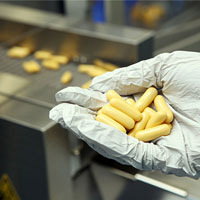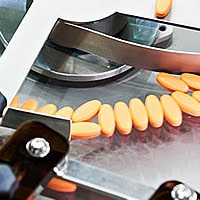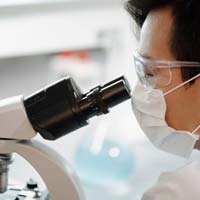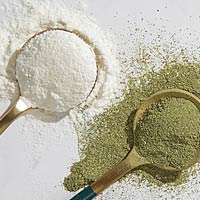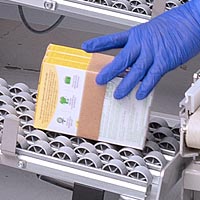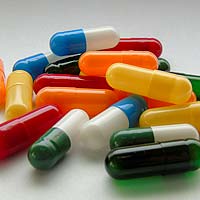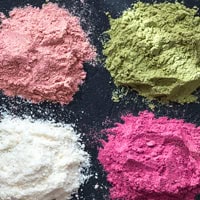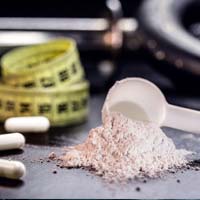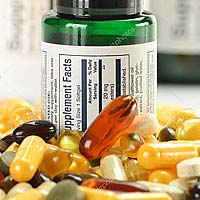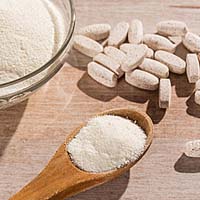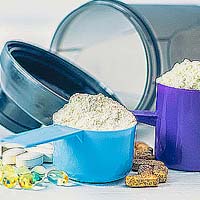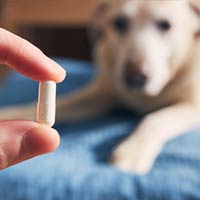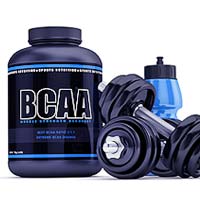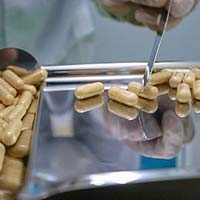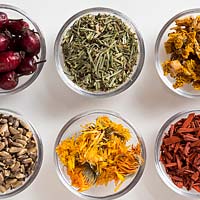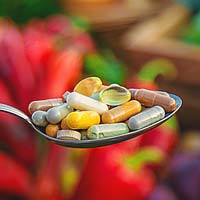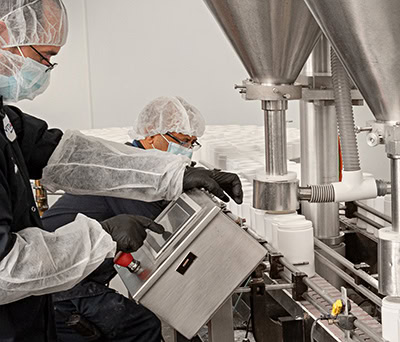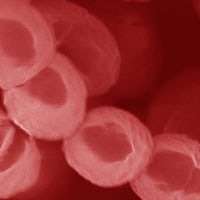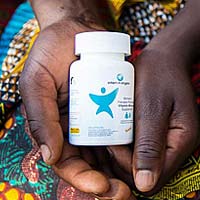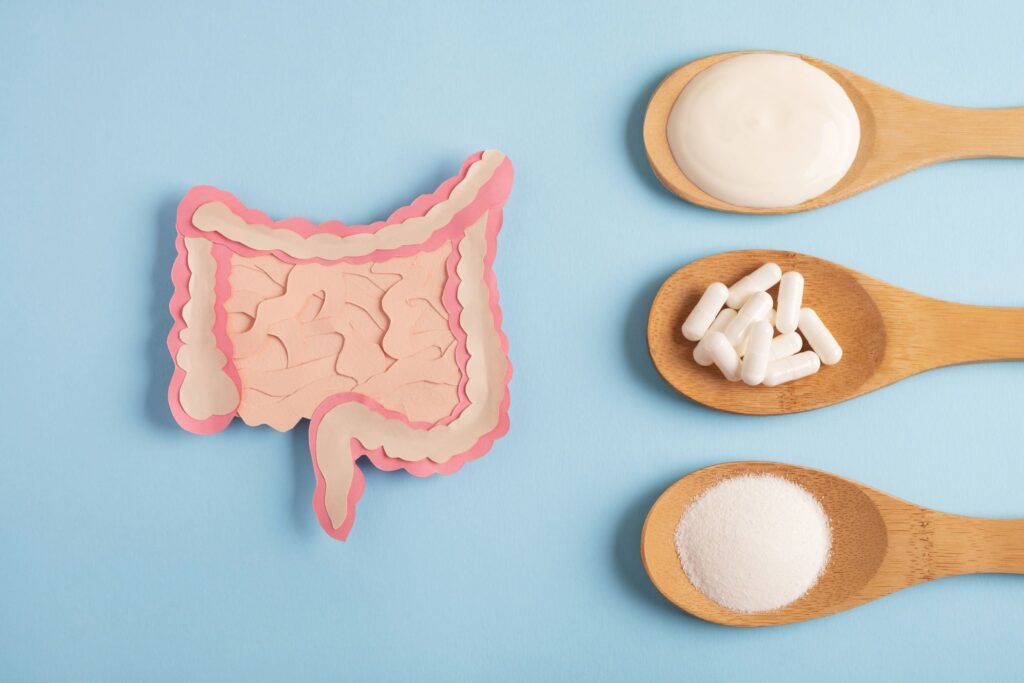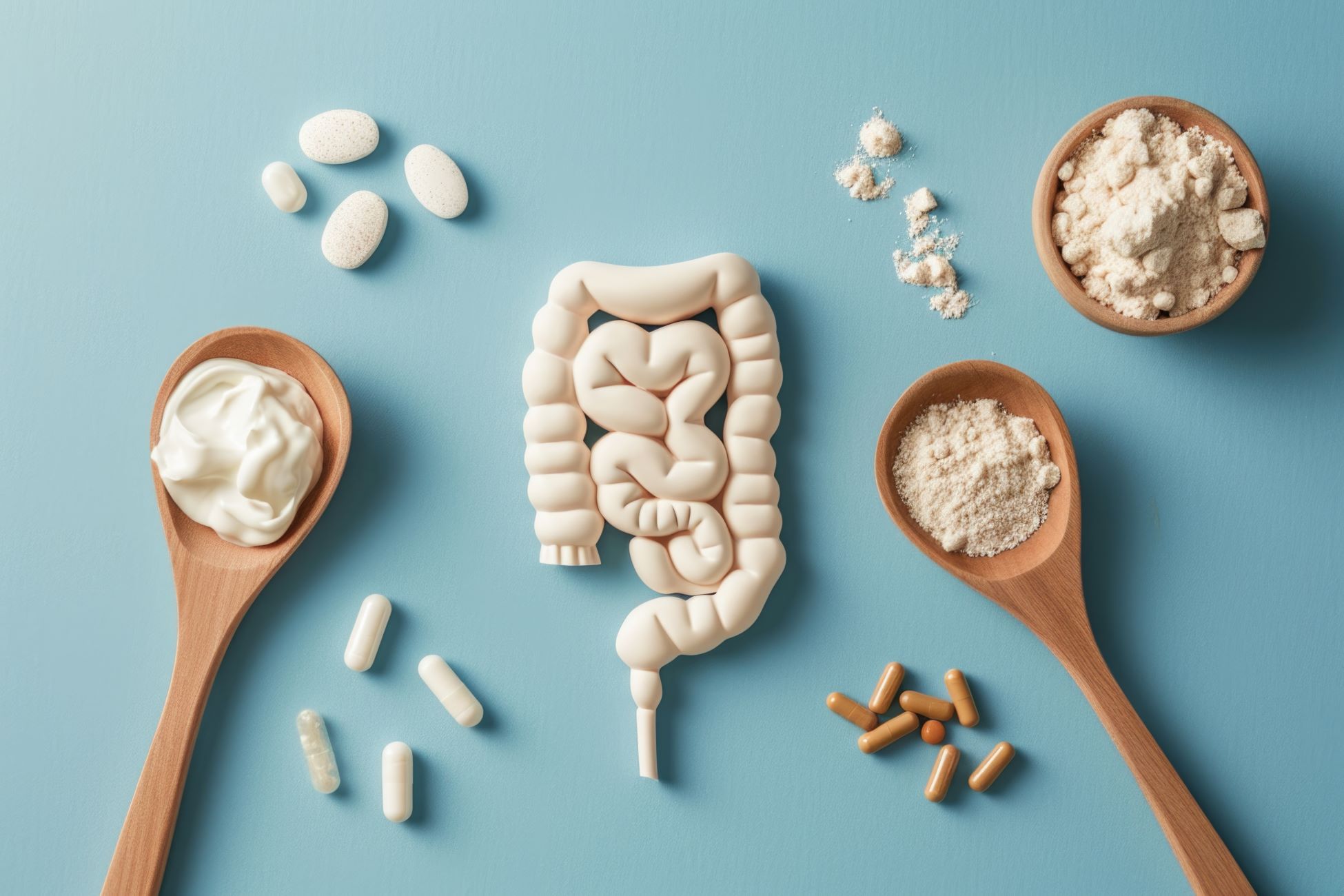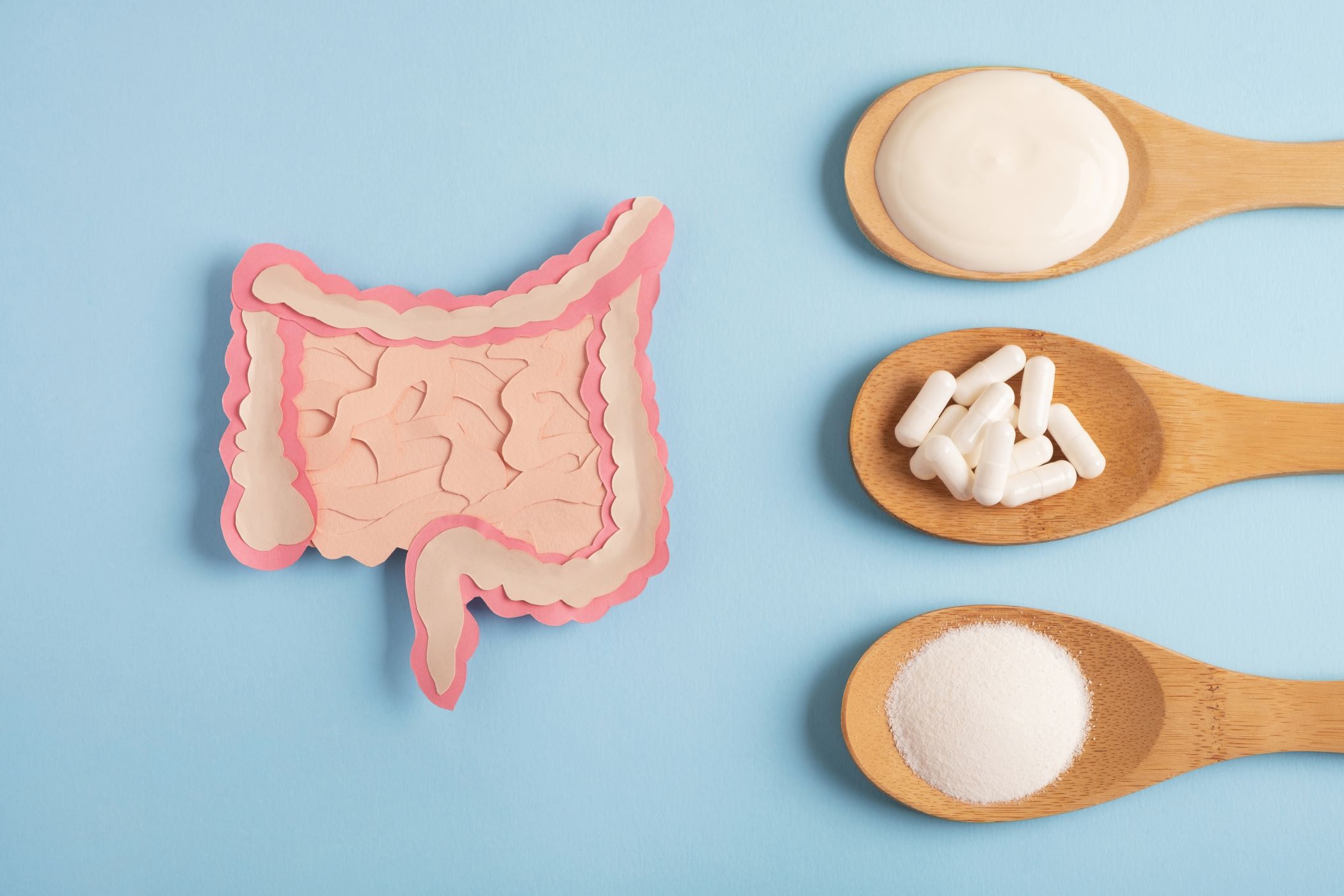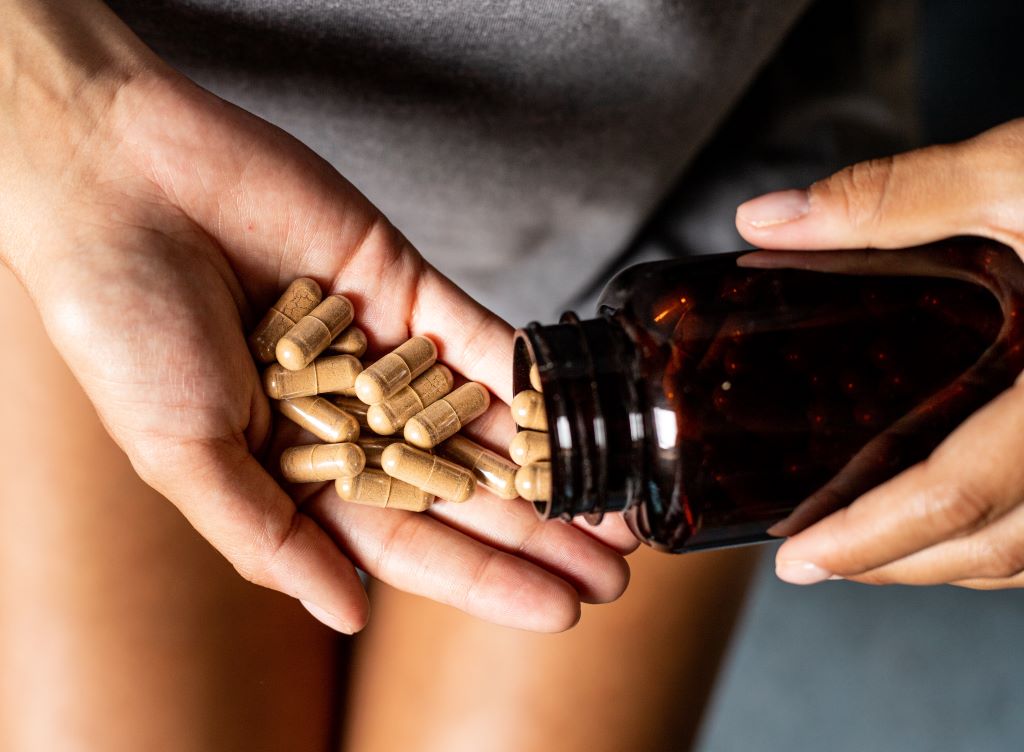Arguably, probiotics are the most important category of nutraceuticals for gut health. A quick search of PubMed reveals over 3,300 human clinical studies conducted on different types of probiotics—a testament to the scientific recognition that these products possess.
What are Probiotics?
The Food and Agriculture Organization of the United Nations and the World Health Organization define probiotics as “Live microorganisms which when administered in adequate amounts confer a health benefit on the host” (also known as friendly bacteria). A simpler definition of probiotics is “live bacteria and yeast that offer health/wellness benefits to your body.”
Health Benefits of Probiotics
-
- Improved digestive health – Probiotics can help promote healthy digestive function in different ways. They may help improve overall hydrolytic capacity (i.e., supporting the breakdown of food molecules) in the small intestine. They can also interact with bile acids in the gut, modifying bile acid metabolism to support fat digestion.1Plaza-Diaz J, Ruiz-Ojeda FJ, Gil-Campos M, Gil A. Mechanisms of Action of Probiotics. Adv Nutr. 2019 Jan 1;10(suppl_1):S49-S66. doi: 10.1093/advances/nmy063. Erratum in: Adv Nutr. 2020 Jul 1;11(4):1054. doi: 10.1093/advances/nmaa042. PMID: 30721959; PMCID: PMC6363529.
- Boosted immune system – Probiotics appear to help create a microbial barrier against foreign invaders within the intestine. Specifically, they produce substances that are effective against many undesirable microbes.2Lievin V, Peiffer I, Hudault S, et al. Bifidobacterium strains from resident infant human gastrointestinal microflora exert antimicrobial activity. Gut 2000;47:646-52.3Rastall RA. Bacteria in the gut: friends and foes and how to alter the balance. J Nutr 2004;134:2022S-2026S. Additionally, probiotics such as Lactobacillus acidophilus and Bifidobacterium bifidum have been shown to influence specific aspects of immune function, including the promotion of antibody and immunoglobulin (IgA) function.4Erickson KL, Hubbard NE. Probiotic Immunomodulation in Health and Disease. J Nutr. 2000;130:403S–409S.
- Reduced inflammation – Not all inflammation stems from medical conditions. In healthy individuals, it can result from factors such as overexercising, exposure to cold climates, or poor diet. In such cases, probiotics may help by influencing the gut microbiota, which in turn can modulate the immune system and produce metabolites that promote an anti-inflammatory response.5Sempach L, Doll JPK, Limbach V, et al. Examining immune-inflammatory mechanisms of probiotic supplementation in depression: secondary findings from a randomized clinical trial. Transl Psychiatry. 2024; 14:305. https://doi.org/10.1038/s41398-024-03030-7.
- Improved skin health – Probiotics may support skin health by influencing the gut-skin axis, reducing inflammation. This includes promoting skin barrier function and even helping to protect against UV damage. Probiotics may even produce short-chain fatty acids (SCFAs), reduce inflammatory cytokines, and influence the expression of genes in skin cells.6Teng Y, Huang Y, Danfeng X, Tao X, Fan Y. The Role of Probiotics in Skin Photoaging and Related Mechanisms: A Review. Clin Cosmet Investig Dermatol. 2022 Nov 16;15:2455-2464. doi: 10.2147/CCID.S388954. PMID: 36420112; PMCID: PMC9677255.7Gao T, Wang X, Li Y, Ren F. The Role of Probiotics in Skin Health and Related Gut-Skin Axis: A Review. Nutrients. 2023 Jul 13;15(14):3123. doi: 10.3390/nu15143123. PMID: 37513540; PMCID: PMC10385652.
- Weight management – Probiotics may aid in weight management by modifying the composition and activity of gut bacteria, influencing the secretion of appetite-regulating hormones such as GLP-1 and PYY. These hormones help increase satiety and reduce overall food intake. Additionally, certain probiotics may affect fat metabolism and support increased calorie burning.8Oudat Q, Okour A. The Role of Probiotics in Modulating Gut Microbiota and Metabolic Health for Weight Management: A Mini Review. Acta Microbiologica Hellenica. 2025; 70(1):5. https://doi.org/10.3390/amh70010005 The effects of probiotics have been demonstrated in human clinical research.9Danielsson P, Putri RR, Marcus C, et al. Evaluating probiotic efficacy on weight loss in adults with overweight through a double-blind, placebo-controlled randomized trial. Sci Rep. 2023;13:18200. https://doi.org/10.1038/s41598-023-45395-7
- Cognitive function and metabolic health – Human clinical research has shown that certain types of probiotic strains can modulate the gut microbiota in ways that positively influence the gut-brain axis. This modulation has been linked to improvements in cognitive function and various markers of metabolic health.10Appleton J. The gut-brain axis: Influence of microbiota on mood and mental health. Integr Med (Encinitas). 2018 Aug;17(4):28-32.11Ma T, Jin H, Kwok LY, Sun Z, Liong MT, Zhang H. Probiotic consumption relieved human stress and anxiety symptoms possibly via modulating the neuroactive potential of the gut microbiota. Neurobiol Stress. 2021;14:100294. Published 2021 Jan 12. doi:10.1016/j.ynstr.2021.100294
Understanding Probiotic Classification and Nomenclature
When discussing probiotics, you’ll frequently encounter terms like genus, species, and strain. Each plays a distinct role in the scientific classification and identification of probiotic organisms. Here’s a brief explanation of each term within the context of probiotic taxonomy:
- Genus: This is the broader classification and includes multiple species that may share similar characteristics. The genus name is always capitalized and italicized. For example, in Bifidobacterium lactis BI-07, Bifidobacterium is the genus.
- Species: This is a more specific classification within a genus, identifying a group of organisms that are closely related. The species name is italicized but not capitalized. For example, in Bifidobacterium lactis BI-07, lactis is the species.
- Strain: This denotes a distinct variation within a species that may possess unique functional properties. The strain designation usually consists of a code of letters and/or numbers and is not italicized. For example, in Bifidobacterium lactis BI-07, BI-07 is the strain. Note that while some may incorrectly refer to the strain as a “strand,” this is not accurate.
A helpful analogy is to think of probiotic classification like a person’s full name. For instance, in “John Smith Jr.”:
- “Smith” = Genus
- “John” = Species
- “Jr.” = Strain
Here is an infographic to better illustrate the nomenclature of this system of classification for probiotics:
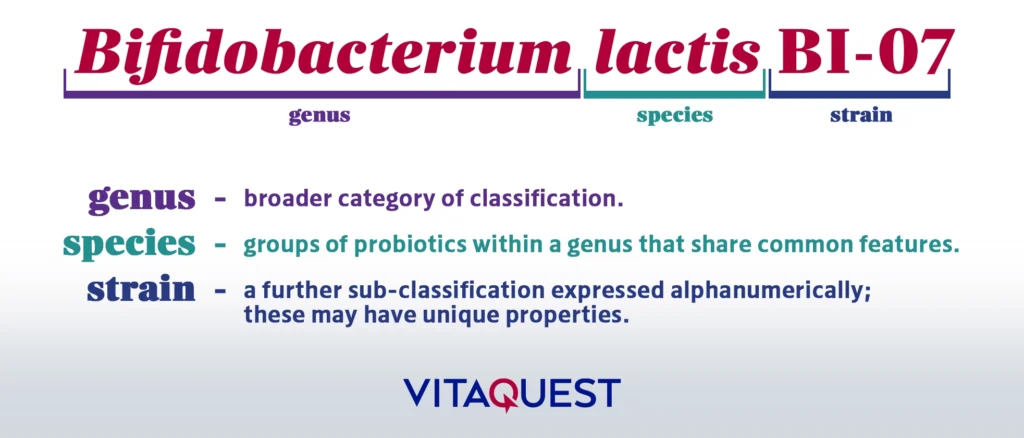
What are the Most Common Types of Probiotics Used in Supplements?
-
Lactobacillus
-
Common Strains
- Lactobacillus refers to a group of lactic acid-producing, friendly bacteria12Casas IA, Dobrogosz WJ. Validation of the probiotic concept: Lactobacillus reuteri confers broad-spectrum protection against disease in humans and animals. Microbial Ecology in Health and Disease 2000;12:247-85.13Fujisawa T, Benno Y, Yaeshima T, Mitsuoka T. Taxonomic study of the Lactobacillus acidophilus group, with recognition of Lactobacillus gallinarum sp. nov. and Lactobacillus johnsonii sp. nov. and synonymy of Lactobacillus acidophilus group A3 (Johnson et al. 1980) with the type strain of Lactobacillus amylovorus (Nakamura 1981). Int J Syst Bacteriol 1992;42:487-91. that make up many of the 400 normal probiotic species in the human body. 14McGroarty JA. Probiotic use of lactobacilli in the human female urogenital tract. FEMS Immunol Med Microbiol 1993;6:251-64.15Bruce AW, Reid G. Intravaginal instillation of Lactobacilli for prevention of recurrent urinary tract infections. Can J Microbiol 1988;34:339-43.16Gupta K, Stapleton AE, Hooton TM, et al. Inverse association of H2O2-producing Lactobacilli and vaginal Escherichia coli colonization in women with recurrent urinary tract infections. J Infect Dis 1998;178:446-50.17Madsen KL, Doyle JS, Jewell LD, et al. Lactobacillus species prevents colitis in interleukin 10 gene-deficient mice. Gastroenterology 1999;116:1107-14.18Casas IA, Dobrogosz WJ. Validation of the probiotic concept: Lactobacillus reuteri confers broad-spectrum protection against disease in humans and animals. Microbial Ecology in Health and Disease 2000;12:247-85.Depending upon the strain, these can reside in the intestinal tract as well as in the vagina. Some common Lactobacillus species include acidophilus, L. plantarum, L. reuteri, L. casei, and L. paracasei.19Goldstein EJC, Tyrrell KL, Citron DM. Lactobacillus Species: Taxonomic Complexity and Controversial Susceptibilities, Clinical Infectious Diseases. 2015; 60(Suppl 2): S98–S107. https://doi.org/10.1093/cid/civ072. Some of the more popular Lactobacillus strains include L. acidophilus DDS-1 and L. rhamnosus GG.
-
Health Benefits
- Beyond supporting digestive and gut health, Lactobacillus supplementation offers several additional benefits. It can enhance the bioavailability of minerals and stimulate growth factors20Madsen KL, Doyle JS, Jewell LD, et al. Lactobacillus species prevents colitis in interleukin 10 gene-deficient mice. Gastroenterology 1999;116:1107-14., while helping to stabilize the mucosal barrier and reduce intestinal permeability.21Shornikova AV, Casas IA, Isolauri E, et al. Lactobacillus reuteri as a therapeutic agent in acute diarrhea in young children. J Pediatr Gastroenterol Nutr 1997;24:399-404.22Casas IA, Dobrogosz WJ. Validation of the probiotic concept: Lactobacillus reuteri confers broad-spectrum protection against disease in humans and animals. Microbial Ecology in Health and Disease 2000;12:247-85. Lactobacillus also plays a critical role in maintaining a healthy microbial balance by producing lactic acid and hydrogen peroxide, which inhibit the growth of undesirable bacteria.23McGroarty JA. Probiotic use of lactobacilli in the human female urogenital tract. FEMS Immunol Med Microbiol 1993;6:251-64.24Velraeds MM, van der Mei HC, Reid G, et al. Inhibition of initial adhesion of uropathogenic Enterococcus faecalis by biosurfactants from Lactobacillus isolates. Appl Environ Microbiol 1996;62:1958-63.25Gupta K, Stapleton AE, Hooton TM, et al. Inverse association of H2O2-producing Lactobacilli and vaginal Escherichia coli colonization in women with recurrent urinary tract infections. J Infect Dis 1998;178:446-50. Moreover, certain strains of Lactobacillus exhibit immunomodulatory properties.26Schultz M, Sartor RB. Probiotics and inflammatory bowel diseases. Am J Gastroenterol 2000;95:S19-21.27deRoos NM, Katan MB. Effects of probiotic bacteria on diarrhea, lipid metabolism, and carcinogenesis: a review of papers published between 1988 and 1998. Am J Clin Nutr 2000;71:405-11.28Isolauri E, Sutas Y, Kankaanpaa P et al. Probiotics: effects on immunity. Am J Clin Nutr 2001;73:444S-450S. These include promoting healthy immune responses29Pelto L, Ioslauri E, Lilius EM, et al. Probiotic bacteria down-regulate the milk-induced inflammatory response in milk-hypersensitive subjects but have an immunostimulatory effect in healthy subjects. Clin Exp Allergy 1998;28:1474-9., supporting balanced levels of Candida albicans30Wagner RD, Pierson C, Warner T, et al. Biotherapeutic effects of probiotic bacteria on candidiasis in immunodeficient mice. Infect Immun 1997;65:4165-4172., and breaking down potential food allergens such as lactose and gluten.
-
-
Bifidobacterium
-
Common Strains
- Bifidobacteria normally colonize within the human colon31Lievin V, Peiffer I, Hudault S, et al. Bifidobacterium strains from resident infant human gastrointestinal microflora exert antimicrobial activity. Gut 2000;47:646-52.32Macfarlane GT, Cummings JH. Probiotics and prebiotics: can regulating the activities of intestinal bacteria benefit health? BMJ 1999;318:999-1003. and, like Lactobacillus species, also produce lactic acid. Some common Bifidobacteria species include bifidum, B. longum, B. breve, and B. adolescentis. Some of the more popular Bifidobacteria strains include Bifidobacterium lactis BI-07 and Bifidobacterium animalis subsp. lactis CECT 8145 BPL1
-
Health Benefits
- Some common health benefits include helping create a microbial barrier to undesirable substances.33Lievin V, Peiffer I, Hudault S, et al. Bifidobacterium strains from resident infant human gastrointestinal microflora exert antimicrobial activity. Gut 2000;47:646-52.34Rastall RA. Bacteria in the gut: friends and foes and how to alter the balance. J Nutr 2004;134:2022S-2026S. Some species of Bifidobacteria bind to the intestinal mucosa and interfere with the attachment of undesirable substances.35Lievin V, Peiffer I, Hudault S, et al. Bifidobacterium strains from resident infant human gastrointestinal microflora exert antimicrobial activity. Gut 2000;47:646-52.36Chen RM, Wu JJ, Lee SC, et al. Increase of intestinal Bifidobacterium and suppression of coliform bacteria with short-term yogurt ingestion. J Dairy Sci 1999:82:2308-14. Since Bifidobacteria disappear from the feces within 2 weeks after discontinuing supplementation, this suggests that there is no long-term colonization37Chiang BL, Sheih YH, Wang LH, et al. Enhancing immunity by dietary consumption of a probiotic lactic acid bacterium (Bifidobacterium lactis HN019): optimization and definition of cellular immune responses. Eur J Clin Nutr 2000;54:849-55.38Lewis SJ, Freedman AR. Review article: the use of biotherapeutic agents in the prevention and treatment of gastrointestinal disease. Aliment Pharmacol Ther 1998;12:807-22., so Bifidobacteria must be used regularly to achieve a continued benefit.
-
-
Bacillus
-
Common Strains
- Probiotics in the Bacillus genus are spore-forming. The spore is a naturally occurring protective encasement that acts like a cocoon, allowing the probiotic within to survive transit through harsh stomach acid and bacteria-killing bile.39Ngo TH. Characterization of Bacillus Species Used for Oral Bacteriotherapy and Bacterial Prophylaxis of Gastrointestinal Disorders. Appl Environ Microbiol. 2000 Dec;66(12):5241-7. Some of the more popular Bacillus strains include Bacillus subtilis DE111 and Bacillus coagulans.
-
Health Benefits
- Health benefits associated with Bacillus supplementation include maintaining healthy cholesterol levels already within a normal range40Mazruei Arani N, Emam-Djomeh Z, Tavakolipour H, Sharafati-Chaleshtori R, Soleimani A, Asemi Z. The Effects of Probiotic Honey Consumption on Metabolic Status in Patients with Diabetic Nephropathy: a Randomized, Double-Blind, Controlled Trial. Probiotics Antimicrob Proteins. 2019;11(4):1195-1201.41Trotter RE, Vazquez AR, Grubb DS, et al. Bacillus subtilis DE111 intake may improve blood lipids and endothelial function in healthy adults. Benef Microbes. 2020 Nov 15;11(7):621-630., maintaining healthy glucose levels already within a normal range42Labellarte GM, Maher M, Healey A, Deaton J. Tolerance and efficacy of the probiotic DE111® delivered in capsule form. Department of Biology, University of Wisconsin-La Crosse. Unpublished. 2015:22 pgs., promoting cardiovascular health43Trotter RE, Vazquez AR, Grubb DS, et al. Bacillus subtilis DE111 intake may improve blood lipids and endothelial function in healthy adults. Benef Microbes. 2020 Nov 15;11(7):621-630., reducing intestinal gas after a meal44Kalman DS, Schwartz HI, Alvarez P, Feldman S, Pezzullo JC, Krieger DR. A prospective, randomized, double-blind, placebo-controlled parallel-group dual site trial to evaluate the effects of a Bacillus coagulans-based product on functional intestinal gas symptoms. BMC Gastroenterol. 2009 Nov 18;9:85., and assisting in the breakdown of gluten.45Labellarte GM, Maher M, Healey A, Deaton J. Tolerance and efficacy of the probiotic DE111® delivered in capsule form. Department of Biology, University of Wisconsin-La Crosse. Unpublished. 2015:22 pgs.
-
-
Streptococcus
-
Common Strains
- Many strains of the Streptococcus genus reside in the oral cavity (i.e., the mouth). Two of the more popular and common of these include salivarius K12 and S. salivarius M18.
-
Health Benefits
- Given that they reside in the oral cavity, it isn’t surprising that research on S. salivarius K12 and S. salivarius M18 indicates they provide dental and throat health benefits.46Dierksen KP, Tagg JR. The influence of indigenous bacteriocin-producing Streptococcus salivarious on the acquisition of Streptocucus pyogenes by primary school children in Dunedin, New Zealand. In Martin DR, Tagg JR (Eds.) Streptococci and Steptococcal Diseases: Entering the new Millennium. XIV Lancefield International Symposium on Streptococci and Steptococcal Diseases. C/- ESR, Porirua. November 2000: 81-85.47Tagg JR. Prevention of streptococcal pharyngitis by anti-Streptococcus pyogenes bacteriocin-like inhibitory substances (BLIS) produced by Streptococcus salivarius. Indian J Med Res. 2004 May;119 Suppl:13-6.48Horz HP, Meinelt A, Houben B, Conrads G. Distribution and persistence of probiotic Streptococcus salivarius K12 in the human oral cavity as determined by real-time quantitative polymerase chain reaction. Oral Microbiol Immunol. 2007 Apr;22(2):126-30.49Di Pierro F, Adami T, Rapacioli G, Giardini N, Streitberger C. Clinical evaluation of the oral probiotic Streptococcus salivarius K12 in the prevention of recurrent pharyngitis and/or tonsillitis caused by Streptococcus pyogenes in adults. Expert Opin Biol Ther. 2013 Mar;13(3):339-43.
-
-
Saccharomyces
-
Common Strains
- Saccharomyces species are a type of yeast. Some have probiotic properties. Saccharomyces boulardii is a strain of Saccharomyces cerevisiae, common baker’s yeast.
-
Health Benefits
- S. boulardii has intestinal benefits. It can help relieve common, temporary diarrhea in some instances and may also help provide some degree of intestinal comfort.50Abid R, Waseem H, Ali J, Ghazanfar S, Muhammad Ali G, Elasbali AM, Alharethi SH. Probiotic Yeast Saccharomyces: Back to Nature to Improve Human Health. Journal of Fungi. 2022; 8(5):444. https://doi.org/10.3390/jof8050444 It is also known for its beneficial impact on promoting immune health.51Abid R, Waseem H, Ali J, Ghazanfar S, Muhammad Ali G, Elasbali AM, Alharethi SH. Probiotic Yeast Saccharomyces: Back to Nature to Improve Human Health. J Fungi (Basel). 2022 Apr 24;8(5):444. doi: 10.3390/jof8050444. PMID: 35628700; PMCID: PMC9147304.
-
Factors to Consider While Choosing Different Strains of Probiotics
There are several factors to consider when choosing different strains of probiotics for a supplement formulation. These include target audience and delivery formats, colony-forming units, regulatory compliance, compatibility with other nutraceuticals, and multi-strain probiotics.
Target Audience and Delivery Formats
The first thing to consider is the target audience. Who is it for, and what is the purpose of the product? Is it meant to be a general gut/immune probiotic formula, in which case there are dozens of possible strain choices, or is there a more specific purpose, such as weight management? Depending on the purpose, you’ll want to choose those probiotic strains with research supporting the intended use.
Given the wide range of benefits, probiotics can be used in almost any demographic. This includes children, although you’ll want to ensure the strain and dosage are consistent with what has previously been demonstrated to be safe and effective in research.
Capsules and powders are traditionally the best delivery formats for probiotics, but tablets can also be used, especially chewables and quick-melts. Liquids and gummies are not the best choice for probiotics due to their high moisture content, which may result in probiotic inactivation by the time the consumer uses the product.
Colony-Forming Units (CFUs)
Colony-forming units, or CFUs, are the standard unit of measurement used to express the potency of probiotics. In most cases, dosages are measured in the billions of CFUs (e.g., 1, 5, or 10 billion CFUs or more), although some formulations use dosages in the millions. Regardless of the amount, the dosage should be determined based on published research. Specifically, the product should deliver the same number of CFUs as those used in clinical studies. Using too few CFUs may result in an ineffective product, while using too many may not enhance efficacy and could unnecessarily increase production costs.
Regulatory Compliance
When considering regulatory compliance, it is essential to select scientifically recognized probiotic strains. A qualified contract development and manufacturing organization (CDMO) can help you make the appropriate selections. Keep in mind that even the most stable probiotics lose potency over time, particularly if not handled properly during manufacturing.
Under FDA regulations, the number of CFUs declared on a Supplement Facts label must reflect the potency at the end of the product’s shelf life. However, some labels state CFUs “at the time of manufacture,” which is largely irrelevant to consumer efficacy. Certain probiotics can lose up to 90% of their activity within two years, so it is crucial to confirm that your manufacturer includes sufficient overages to meet label claims through the expiration date.
Additionally, all probiotics must be listed on the label by their weight in milligrams. Listing CFUs is optional but strongly recommended.
Compatibility with Other Nutraceuticals
When formulating probiotic supplements, it’s important to consider the compatibility of probiotics with other nutraceutical ingredients. Many probiotic strains are sensitive and may lose viability when combined with ingredients that have higher moisture content or other destabilizing properties. In such cases, these strains are best used in formulations that include only other probiotics or prebiotics. However, several resilient probiotic strains can remain stable and effective when combined with various nutraceuticals. A knowledgeable CDMO can help identify which strains and ingredients are compatible to ensure product efficacy and stability.
Multi-Strain Probiotics
Some supplements feature multiple probiotic strains, which can enhance marketing appeal. However, this does not automatically equate to greater efficacy; it largely depends on the dosage of each strain.
For example, if a product contains 10 different strains but only one is included at a clinically validated dose, then any health claims should be limited to that single strain. Without supporting research specific to the full 10-strain combination, the lower doses of the remaining strains may not provide any measurable benefit. Conversely, some multi-strain combinations have been studied and shown to be effective, with published research supporting their combined use.
Ultimately, all health claims should be based on clinically relevant doses of the probiotic strains included in the formula.
Manufacture Exceptional Probiotic Supplements with Vitaquest
As the largest custom, non-originator contract manufacturer of probiotic dietary supplements in the United States, Vitaquest proudly produces more than 50 million retail units of finished probiotic products annually. Armed with access to the latest research and regulatory insights, our team has successfully formulated hundreds of products using all the probiotic strains highlighted in this article.
For more information on how we can help your business Deliver What’s Next in probiotic supplements, call 800-526-9095 to speak with one of our knowledgeable sales executives or request a competitive nutraceutical manufacturing price quote.
Concluding Thoughts
Probiotics are a rapidly growing category in the dietary supplements industry and promote numerous health benefits. Types of probiotics like L. acidophillus DDS-1, L. rhamnosus GG, Bifidobacterium lactis BI-07, Bifidobacterium animalis subsp. lactis CECT 8145 BPL1, Bacillus subtilis DE111, Bacillus coagulans MTCC5856, Streptococcus salivarius K12 and Streptococcus salivarius M18 and others contribute to this. To stand out in the market, you need a unique probiotic product.
With over 45 years of dietary supplement contract manufacturing experience and more than 100 probiotic strains available, Vitaquest can help you create a superior probiotic supplement product for your business.
Frequently Asked Questions About Probiotic Strains and Their Benefits
What are the specific benefits of Lactobacillus and Bifidobacterium probiotics?
Lactobacillus probiotics offer a wide range of health benefits, including supporting digestive and gut health, enhancing mineral bioavailability, decreasing intestinal permeability, maintaining a healthy balance of gut bacteria, and promoting immune function.
Bifidobacterium probiotics help form a microbial barrier that protects against undesirable substances and interferes with their ability to adhere to the intestinal lining, providing an added layer of defense in the gut.
What are the Most Common Health Benefits Associated with Probiotics?
The most widely recognized health benefits of probiotics include supporting digestive function and promoting overall gut health. Additionally, probiotics are known to promote a healthy immune system largely because approximately 70% of the body’s immune system resides within the gastrointestinal tract. By maintaining a balanced gut microbiota, probiotics can help strengthen the body’s natural defenses and support a healthier immune response.
How many strains should a probiotic have?
There is no set rule for the number of strains in a probiotic formula, but more is not always better. A product is only as effective as the clinical relevance of its doses. If only one strain is included at a research-backed, effective dose, the presence of other strains in subtherapeutic amounts may offer little to no additional benefit. However, if a specific multi-strain combination has been studied and shown to provide synergistic effects, then its inclusion is scientifically justified and potentially more beneficial.

